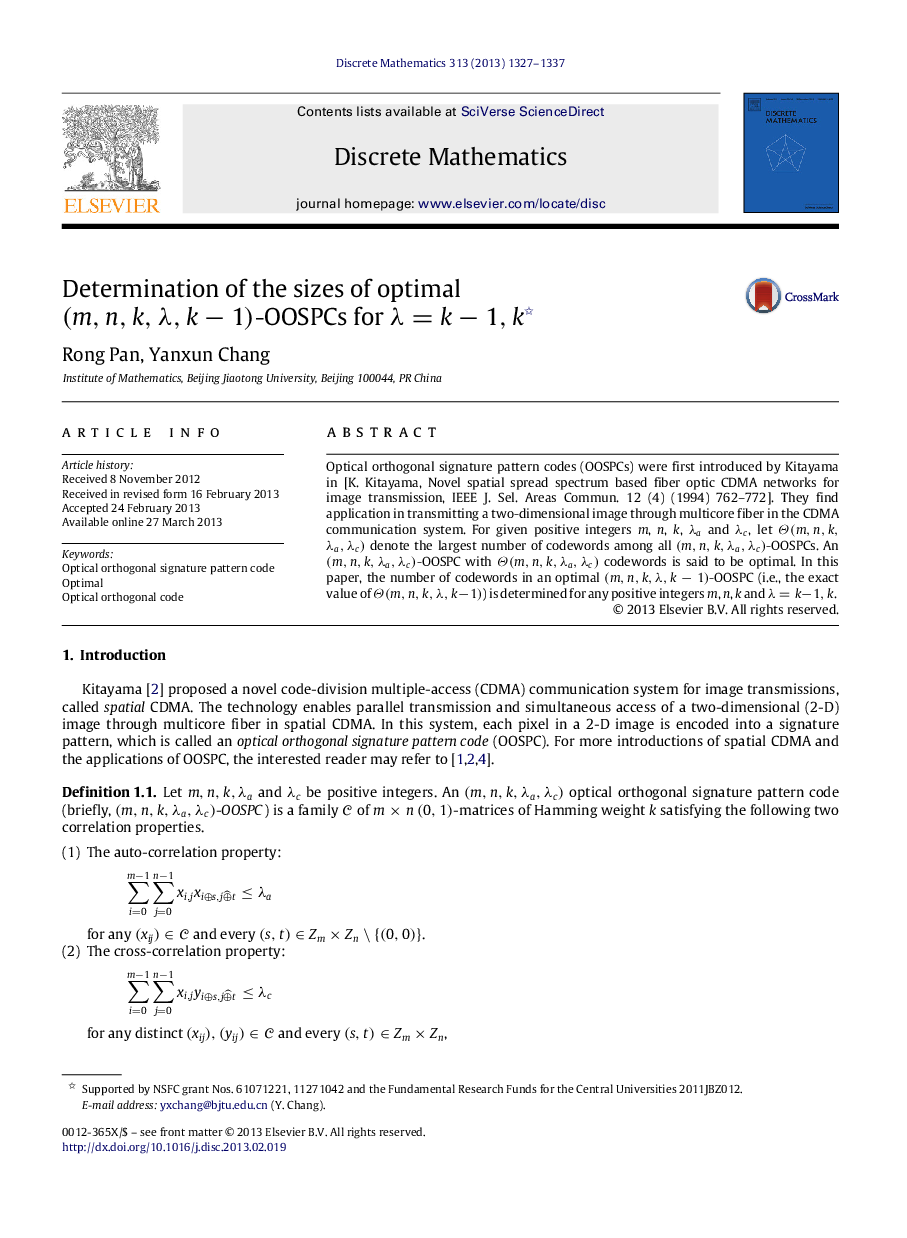| Article ID | Journal | Published Year | Pages | File Type |
|---|---|---|---|---|
| 4647670 | Discrete Mathematics | 2013 | 11 Pages |
Abstract
Optical orthogonal signature pattern codes (OOSPCs) were first introduced by Kitayama in [K. Kitayama, Novel spatial spread spectrum based fiber optic CDMA networks for image transmission, IEEE J. Sel. Areas Commun. 12 (4) (1994) 762-772]. They find application in transmitting a two-dimensional image through multicore fiber in the CDMA communication system. For given positive integers m, n, k, λa and λc, let Î(m,n,k,λa,λc) denote the largest number of codewords among all (m,n,k,λa,λc)-OOSPCs. An (m,n,k,λa,λc)-OOSPC with Î(m,n,k,λa,λc) codewords is said to be optimal. In this paper, the number of codewords in an optimal (m,n,k,λ,kâ1)-OOSPC (i.e., the exact value of Î(m,n,k,λ,kâ1)) is determined for any positive integers m, n, k and λ=kâ1,k.
Keywords
Related Topics
Physical Sciences and Engineering
Mathematics
Discrete Mathematics and Combinatorics
Authors
Rong Pan, Yanxun Chang,
